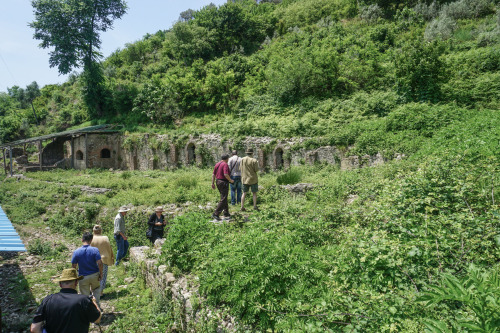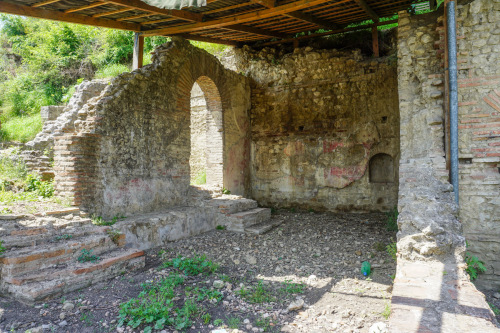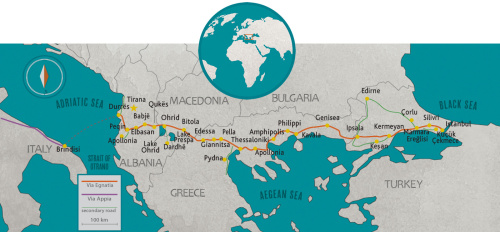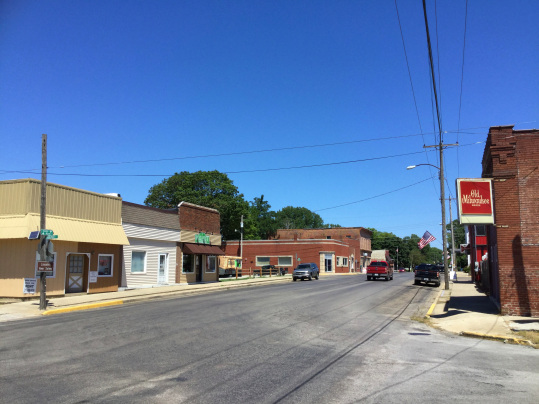On his Third Missionary Journey Paul wrote the following to the Church in Rome.
Rom. 15:18–19 “I will not venture to speak of anything except what Christ has accomplished through me in leading the Gentiles to obey God by what I have said and done—by the power of signs and miracles, through the power of the Spirit. So from Jerusalem all the way around to Illyricum, I have fully proclaimed the gospel of Christ.”
 Part of the heartland of Illyricum included modern day Albania. When would Paul have visited Illyricum—such a visit is not mentioned in Acts? Possibly on his Second and/or Third Missionary Journeys. How would he have gotten there? It seems logical to assume that he would have traveled on the via Egnatia—as he did on his Second Journey from Philippi to Amphipolis, to Appolonia, to Thessalonica, etc. And from Thessalonica he could have continued on the same road west to Illyricum.
Part of the heartland of Illyricum included modern day Albania. When would Paul have visited Illyricum—such a visit is not mentioned in Acts? Possibly on his Second and/or Third Missionary Journeys. How would he have gotten there? It seems logical to assume that he would have traveled on the via Egnatia—as he did on his Second Journey from Philippi to Amphipolis, to Appolonia, to Thessalonica, etc. And from Thessalonica he could have continued on the same road west to Illyricum.
In May of 2015 my wife and I had the privilege of joining a group led by Dr. Mark Wilson that traced the route and stopping points along the via Egnatia—the Roman road that led from Dyrrhachium and Appolonia on the shore of the Adriatic Sea to Byzantium. The construction of the via Egnatia began in the second century B.C. and it eventually reached a length of 696 miles.

View of the remains of Ad Quintum (“At Five [miles]”)—a place where riders would change their horses (mutatio). The row of arches in the center of the image are evidently remnants of a monumental water fountain (nymphaeum) that was built into the hill. On the left, with some protective covering, is the area where there was a Roman Bath.
A Roman bath at Ad Quintum, a change–over station (mutatio) on the via Egnatia, is very well–preserved. It was discovered after a landslide in 1968. It was listed in the Bordeaux Itinerary of A.D. 333. Although “change-over stations” (mutatio—where horses were changed by official couriers) are well–known from literary sources, but only few have been identified archaeologically. Ad Quintum is located a few miles west of the modern Elbasan (ancient Scampis) in Albania.
View of the remains of the interior of the Roman Bath at Ad Quintum (“At Five [miles]”)—a place where riders would change their horses (mutatio). Note the frescos on the wall, the steps, and the terra cotta brick work of the arches above the doors.
The current ancient constructions at Ad Quintum are thought to date to the 2nd–4th centuries A.D. (Note from Dr. Mark Wilson). To view additional images of the remains at Ad Quintum Click Here. The above map of the via Egnatia is from a wonderful article in AramcoWorld.
The above map of the via Egnatia is from a wonderful article in AramcoWorld.
To view a Roman Bridge on the via Egnatia Click Here.
Advertisements Share this:






